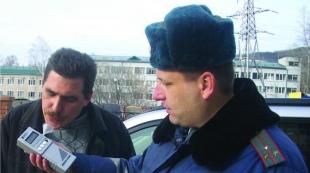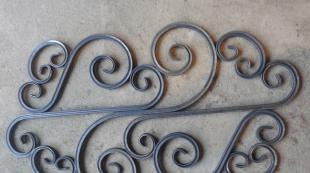Switchgear with voltage above 1 kV. Transformer substations and switchgears, their classification and diagrams
Each substation has switchgear (RU) containing switching devices, protection and automation devices, measuring instruments, combined and connecting tires, auxiliary devices.
According to the design of the reactor, the switchgear is divided into open and closed. They can be complete (assembly at the factory) or prefabricated (assembly partially or completely on site).
Open switchgear (ORU) - a switchgear, all or the main equipment of which is located in the open air; closed switchgear (ZRU) - a device whose equipment is located in a building.
Complete switchgear (KRU) - a switchgear consisting of cabinets, fully or partially closed, or blocks with devices built into them, protection and automation devices, measuring instruments and auxiliary devices, supplied assembled or fully prepared for assembly and intended for indoor installation.
Complete outdoor switchgear (KRUN) is a switchgear designed for outdoor installation.
Complete transformer (converting) substation (KTP) - a substation consisting of transformers (converters) and KRU or KRUN units, supplied assembled or fully prepared for assembly.
Distribution switching point (RP) - a switchgear designed to receive and distribute electricity at one voltage without conversion and transformation.
Chamber - a room intended for the installation of devices and tires: a closed chamber is closed on all sides and has solid (not mesh) doors; the fenced chamber has openings protected in whole or in part by non-continuous (mesh or mixed) fences.
Each substation has three main nodes: high voltage switchgear, transformer, low voltage switchgear.
Purpose and classification of substations. A substation is an electrical installation consisting of transformers or other energy converters, switchgear with voltage up to 1000 V and above, which is used to convert and distribute electricity.
Depending on the purpose of the substation, they are transformer (TP) or converter (PP) - rectifier.
Transformer substations are the main link in the power supply system. Depending on the position in the power system, purpose, the value of the primary and secondary voltages, they can be divided into district substations, substations industrial enterprises, traction substations, substations of the city electrical network, etc.
District and nodal substations are powered by district (main) networks of the energy system and are designed to supply large areas with industrial, urban, agricultural and other consumers of electricity. The primary voltages of district substations are 750, 500, 330, 220, 150 and 110 kV, and the secondary voltages are 220, 150, 110, 35, 20, 10 or 6 kV.
The following types of transformer substations are located on the territory of industrial enterprises:
Factory substations, which are performed as: a) main step-down substations and deep input substations with an open switchgear for receiving electricity from power systems with a voltage of 110-35 kV and converting it into the factory network voltage of 6-10 kV to power workshop and inter-shop substations and powerful consumers ; b) substations and distribution points with closed switchgears, with the installation of high-voltage equipment for 6-10 kV such as KSO or KRU and transformers for 6-10 / 0.4 kV.
Workshop substations designed to power one or more workshops are performed:
a) free-standing, attached and built-in with the installation of transformers in closed chambers and switchboards for a voltage of 0.4-0.23 kV;
b) intrashop mainly as complete type KTP with the installation of one or two transformers with a capacity of 400 kV-A and above, placed in a separate room of the shop or directly in the shop, depending on environmental conditions and the nature of production.
Distribution devices power stations and substations are closed (indoor installation) - with the location of equipment in buildings (ZRU) and open (outdoor installation) - with the location of all or the main equipment in the open air (ORU). Wide application find complete switchgears for both indoor installation (KRU) and outdoor installation (KRUN). In the design and construction of switchgear, complete 6-10 kV cells, complete switchgears, as well as individual factory-made units are currently used.
Switchgears 35-750 kV are usually made open.
Closed switchgears are mainly used at voltages of 3-20 kV, as well as at voltages of 35-220 kV in cases of limited areas for switchgear, increased atmospheric pollution and severe climatic conditions (Far North). Recently, complete switchgears with SF 6 insulation (GIS) have been introduced into power systems. They can be made for both indoor and outdoor installation. 110-220 kV GIS are currently in operation and 330-1150 kV GIS are being developed. The use of switchgear instead of standard outdoor switchgear makes it possible to reduce the area and volume of switchgear by about 6-10 times, increase the reliability of work and the culture of operation of electrical installations, but requires about twice as much capital investment.
2.2.1. This chapter applies to switchgear and substations of Consumers with a voltage of 0.4 to 220 kV.
2.2.2. The room of the consumer's switchgear, adjacent to the premises belonging to third-party organizations, and having energized equipment, must be isolated from them. It must have a separate lockable exit.
The switchgear equipment serviced by the Consumers and used by the power supply organization must be controlled on the basis of the instructions agreed by the Consumer and the power supply organization.
2.2.3. In switchgear rooms, doors and windows must always be closed, and openings in partitions between devices containing oil must be sealed. All openings in the places where the cable passes are sealed. To prevent the entry of animals and birds, all openings and openings in the outer walls of the premises are sealed or covered with nets with a mesh size (1x1) cm.
2.2.4. Current-carrying parts of ballasts and protection devices must be protected from accidental contact. In special rooms (electrical machines, switchboards, control stations, etc.), open installation of devices without protective covers is allowed.
All switchgear (shields, assemblies, etc.) installed outside the electrical premises must have locking devices that prevent non-electrotechnical personnel from accessing them.
2.2.5. The electrical equipment of the switchgear of all types and voltages must satisfy the operating conditions both under normal conditions and during short circuits, overvoltages and overloads.
The insulation class of electrical equipment must correspond to the rated voltage of the network, and surge protection devices - to the insulation level of electrical equipment.
2.2.6. When electrical equipment is located in an area with a polluted atmosphere, measures must be taken to ensure the reliability of insulation:
In open switchgears (hereinafter referred to as outdoor switchgear) - strengthening, washing, cleaning, coating with hydrophobic pastes;
In closed switchgears (hereinafter - ZRU) - protection against the ingress of dust and harmful gases;
In complete switchgears for outdoor installation - sealing of cabinets and treatment of insulation with hydrophobic pastes.
2.2.7. Heating by induced current of structures located near current-carrying parts through which current flows and accessible to personnel should not exceed 50 ° C.
2.2.8. The air temperature inside the indoor switchgear in summer time should not exceed 40°C. If it rises, measures must be taken to reduce the temperature of the equipment or cool the air.
The air temperature in the compressor station room must be maintained within (10-35)°С; in the room of gas-insulated switchgears (hereinafter - KRUE) - within (1-40) ° С.
The temperature of the busbar connectors in the switchgear should be controlled according to the approved schedule.
2.2.9. The distances from the current-carrying parts of the outdoor switchgear to trees, tall shrubs should be such that the possibility of overlapping is excluded.
2.2.10. The floor covering in ZRU, KRU and KRUN should be such that there is no formation of cement dust.
The premises intended for the installation of cells of a complete switchgear with SF6 insulation (hereinafter referred to as GIS), as well as for their revision before installation and repair, must be isolated from the street and other premises. Walls, floor and ceiling must be painted with dustproof paint.
Cleaning of premises should be carried out by wet or vacuum method. The premises must be equipped supply and exhaust ventilation with air suction from below. Air supply ventilation must pass through filters to prevent dust from entering the room.
2.2.11. Cable ducts and ground cable trays of switchgear and indoor switchgear must be covered with fireproof plates, and the exit points of cables from cable ducts, trays, from floors and transitions between cable compartments must be sealed with refractory material.
Tunnels, basements, channels must be kept clean, and drainage devices must ensure unimpeded drainage of water.
Oil receivers, gravel bedding, drains and oil outlets must be maintained in good condition.
2.2.12. The oil level in oil switches, instrument transformers and bushings must remain within the oil gauge scale at maximum and minimum ambient temperatures.
The oil of leaky bushings must be protected from moisture and oxidation.
2.2.13. Roads for vehicle access to switchgear and substations must be in good condition.
Places where vehicles are allowed to cross cable channels must be marked with a sign.
2.2.14. All keys, buttons and control knobs must have inscriptions indicating the operation for which they are intended ("Enable", "Disable", "Decrease", "Add", etc.).
On signal lamps and signal devices there should be inscriptions indicating the nature of the signal ("Enabled", "Disabled", "Overheating", etc.).
2.2.15. Switches and their drives must have indicators of the off and on positions.
On circuit breakers with a built-in drive or with a drive located in close proximity to the circuit breaker and not separated from it by a solid opaque fence (wall), it is allowed to install one indicator - on the circuit breaker or on the drive. On circuit-breakers whose external contacts clearly indicate the closed position, it is not necessary to have an indicator on the circuit-breaker and the drive built-in or not enclosed by a wall.
The drives of disconnectors, grounding knives, separators, short circuits and other equipment separated from the devices by a wall must have indicators of the off and on positions.
All drives of disconnectors, separators, short-circuiters, grounding knives that do not have guards must have devices for locking them both in the on and off position.
Switchgear equipped with switches with spring drives must be equipped with devices for winding the spring mechanism.
2.2.16. The personnel servicing the reactor plant must have documentation on the permissible modes of operation in normal and emergency conditions.
Personnel on duty must have a stock of calibrated fuse links. The use of uncalibrated fuse links is not allowed. Fuses must match the type of fuses.
The serviceability of the reserve elements of the switchgear (transformers, switches, tires, etc.) should be regularly checked by turning on the voltage within the time limits established local regulations.
2.2.17. The switchgear equipment must be periodically cleaned of dust and dirt.
The cleaning period is set by the person responsible for electrical facilities, taking into account local conditions.
Cleaning of switchgear premises and electrical equipment must be carried out by trained personnel in compliance with safety rules.
2.2.18. Switchgear interlocks, other than mechanical ones, must be permanently sealed. Switchover personnel are not allowed to unlock these devices without authorization.
2.2.19. To apply grounding in a switchgear with a voltage above 1000 V, as a rule, stationary grounding knives should be used.
The handles of the earthing knife drives should be painted red, and the earthing knife drives, as a rule, should be painted black. Operations with manual drives devices must be manufactured in compliance with safety regulations.
In the absence of stationary grounding knives, the places of connection of portable grounding to current-carrying parts and the grounding device must be prepared and marked.
2.2.20. On the doors and inner walls of the switchgear chambers, outdoor switchgear equipment, front and inner parts of outdoor and indoor switchgear, assemblies, as well as on the front and reverse sides board panels must be inscribed indicating the purpose of the connections and their dispatcher name.
There must be warning posters and signs of the established form on the doors of the switchgear.
The safety shields and (or) the fuses of the connections must have inscriptions indicating the rated current of the fuse-link.
2.2.21. The switchgear must contain electrical protective equipment and personal protection(in accordance with the norms for the acquisition of protective equipment), protective fire-fighting and auxiliary equipment (sand, fire extinguishers) and first aid equipment for victims of accidents.
For reactor facilities serviced by operational mobile teams (hereinafter referred to as the OVB), protective equipment may be located at the OVB.
2.2.22. Cabinets with equipment for relay protection and automation, communications and telemechanics, control cabinets and distribution cabinets for air circuit breakers, as well as cabinets for drives of oil circuit breakers, separators, short circuits and motor drives of disconnectors installed in the switchgear, in which the air temperature may be below the permissible value, must have heating devices.
Switching on and off of electric heaters should, as a rule, be carried out automatically. System automatic start and shutdown of electric heaters should also provide for constant monitoring of their integrity with the transfer of information to the local control panel and (or) dispatcher console.
Oil circuit breakers must be equipped with devices for electric heating of the bottoms of tanks and casings, which are switched on when the ambient temperature drops below the permissible level. The temperatures at which the commissioning and decommissioning of electric heaters must be carried out are set by local regulations, taking into account the instructions of the electrical equipment manufacturers.
2.2.23. Reservoirs of air circuit breakers and other devices, as well as air collectors and cylinders must meet the established requirements.
2.2.24. Swivel joints, bearings and rubbing surfaces of the mechanisms of switches, disconnectors, separators, short circuiters and their drives must be lubricated with low-freezing lubricants, and oil dampers of switches and other devices must be filled with oil, the freezing point of which must be at least 20 ° C below the minimum winter temperature outside air.
2.2.25. Devices for automatic control, protection and signaling of the air handling unit, as well as safety valves should be systematically checked and adjusted according to the requirements of the manufacturer's instructions.
2.2.26. The time between stop and subsequent start of working compressors (non-working pause) must be at least 60 minutes. for compressors with an operating pressure of 4.0-4.5 MPa (40-45 kgf / cm2) and at least 90 min. for compressors with a working pressure of 23 MPa (230 kgf/cm2).
Replenishment of air flow by working compressors should be provided no more than 30 minutes. for compressors with working pressure (4.0-4.5) MPa (40-45) kgf/cm2 and 90 min. for compressors with a working pressure of 23 MPa (230 kgf/cm2).
2.2.27. Drying compressed air for switching devices must be carried out thermodynamically.
The required degree of drying of compressed air is ensured when the ratio of the difference between the rated compressor and rated working pressure of the switching devices is at least two - for devices with a rated working pressure of 2 MPa (20 kgf / cm2) and at least four - for devices with a rated working pressure (2.6- 4.0) MPa (26-40 kgf/cm2).
2.2.28. Moisture from air collectors with a compressor pressure of (4.0-4.5) MPa (40-45) kgf / cm2 must be removed at least 1 time in 3 days, and at facilities without permanent duty personnel - according to an approved schedule drawn up on the basis of operating experience.
The bottoms of the air collectors and the drain valve must be insulated and equipped with an electric heating device, which is turned on when moisture is removed for the time required to melt ice at negative outside temperatures.
Removal of moisture from the condensate collectors of groups of cylinders with a pressure of 23 MPa (230 kgf / cm2) should be carried out automatically every time the compressor is started. In order to avoid freezing of moisture, the lower parts of the cylinders and condensate collectors must be placed in a heat-insulating chamber with an electric heater, with the exception of cylinders installed after compressed air purification units (hereinafter referred to as CAU). BOW water separator should be purged at least 3 times a day.
Checking the degree of drying - the dew point of the air at the outlet of the CWW - should be done once a day. The dew point should be no higher than minus 50°C at a positive ambient temperature and no higher than minus 40°C - with a negative one.
2.2.29. Internal inspection and hydraulic testing of air receivers and compressor pressure cylinders must be carried out in accordance with established requirements. An internal inspection of the reservoirs of air circuit breakers and other devices should be carried out during major repairs.
Hydraulic tests of air circuit breaker tanks should be carried out in cases where, during inspection, defects are found that cast doubt on the strength of the tanks.
The internal surfaces of the tanks must have an anti-corrosion coating.
2.2.30. Compressed air used in air circuit breakers and drives of other switching devices must be cleaned from mechanical impurities using filters installed in the distribution cabinets of each air circuit breaker or on the air duct supplying the drive of each device.
After the installation of the air supply network is completed, all air ducts must be blown out before the initial filling of the reservoirs of air circuit breakers and drives of other devices.
To prevent contamination of compressed air during operation, purges should be carried out:
main air ducts at a positive ambient temperature - at least 1 time in 2 months;
air ducts (tap from the network) to the distribution cabinet and from the cabinet to the tanks of each pole of switches and drives of other devices with their disconnection from the device - after each major overhaul of the device;
reservoirs of air circuit breakers - after each major and current repair, as well as in case of violation of the operating modes of compressor stations.
2.2.31. For air circuit breakers, the operation of the ventilation of the internal cavities of the insulators (for circuit breakers with indicators) should be checked periodically.
The frequency of inspections should be established based on the recommendations of the manufacturers.
2.2.32. The humidity of SF6 gas in switchgear, SF6 circuit breakers must be monitored for the first time no later than a week after filling the equipment with SF6 gas, and then 2 times a year (in winter and summer).
2.2.33. Control of SF6 gas concentration in switchgear and switchgear rooms should be carried out using special leak detectors at a height of 10 - 15 cm from the floor level.
The concentration of SF6 gas in the room must be within the limits specified in the instructions of the plants - manufacturers of the apparatus.
The control must be carried out according to the schedule approved by the technical manager of the Consumer.
2.2.34. SF6 leakage must not exceed 3% of total mass in year. It is necessary to take measures to fill the tanks with SF6 when its pressure deviates from the nominal one.
It is not allowed to carry out operations with circuit breakers at reduced SF6 gas pressure.
2.2.35. Vacuum arc chutes (hereinafter - KDV) must be tested in volumes and within the time limits set by instructions factories - manufacturers of switches.
When testing KDV with increased voltage with an amplitude value of more than 20 kV, it is necessary to use a screen to protect against emerging X-rays.
2.2.36. Checking the quenching chambers of load breakers, establishing the degree of wear of gas-generating arc-suppressing liners and burning of fixed arc-suppressing contacts is carried out periodically within the time limits established by those responsible for electrical facilities, depending on the frequency of operating load breakers.
2.2.37. Drainage of moisture from the tanks of oil circuit breakers must be carried out 2 times a year - in the spring with the onset of positive temperatures and in the fall before the onset of negative temperatures.
2.2.38. Preventive checks, measurements and tests of the RI equipment should be carried out in the scope and within the time limits stipulated by the electrical equipment testing standards (Appendix 3).
2.2.39. Inspection of the switchgear without shutdown should be carried out:
at facilities with constant personnel on duty - at least 1 time per 1 day; at night to detect discharges, coronation - at least once a month;
at facilities without permanent personnel on duty - at least 1 time per month, and at transformer and distribution points - at least 1 time in 6 months.
In case of unfavorable weather (heavy fog, sleet, ice, etc.) or heavy pollution, additional inspections should be organized at the outdoor switchgear.
All noticed malfunctions must be recorded in the log of defects and malfunctions on the equipment and, in addition, information about them must be reported to the person responsible for the electrical economy.
Faults found must be corrected as soon as possible.
2.2.40. When examining the reactor facility, special attention should be paid to the following:
the condition of the premises, the serviceability of doors and windows, the absence of leaks in the roof and interfloor ceilings, the presence and serviceability of locks;
serviceability of heating and ventilation, lighting and grounding network;
availability of fire extinguishing equipment;
availability of tested protective equipment;
completeness of the medical kit;
oil level and temperature, no leaks in the apparatus;
condition of contacts, switches of the low voltage shield;
integrity of seals at counters:
condition of insulation (dust content, presence of cracks, discharges, etc.);
absence of damage and traces of corrosion, vibration and cracking of SF6 equipment;
operation of the alarm system;
air pressure in the tanks of air circuit breakers;
compressed air pressure in the reservoirs of pneumatic actuators of circuit breakers;
no air leaks;
serviceability and correctness of indications of indicators of position of switches;
the presence of ventilation of the poles of air circuit breakers;
absence of oil leakage from capacitors of capacitive voltage dividers of air circuit breakers;
the operation of electric heating devices in the cold season;
closeness of control cabinets;
the possibility of easy access to switching devices, etc.
2.2.41. The overhaul of the reactor plant equipment must be carried out within the following timeframes:
oil circuit breakers - 1 time in 6 - 8 years when monitoring the characteristics of the circuit breaker with a drive during the overhaul period;
load break switches, disconnectors and grounding knives - 1 time in 4 - 8 years (depending on design features);
air switches - 1 time in 4-6 years;
separators and short-circuiters with an open knife and their drives - 1 time in 2 - 3 years;
compressors - 1 time in 2-3 years;
KRUE - 1 time in 10-12 years;
SF6 and vacuum circuit breakers - 1 time in 10 years;
conductors 1 time - in 8 years;
all devices and compressors - after the exhaustion of the resource, regardless of the duration of operation.
First overhaul installed equipment must be carried out within the time specified in the technical documentation of the manufacturer.
Indoor disconnectors should be repaired as needed.
Repair of the reactor plant equipment is also carried out as necessary, taking into account the results of preventive tests and inspections.
The frequency of repairs can be changed, based on operating experience, by the decision of the technical manager of the Consumer.
Extraordinary repairs are carried out in case of equipment failures, as well as after the exhaustion of the switching or mechanical resource.
Closed switchgear (ZRU)
Closed switchgears and substations.
Closed switchgears are most often constructed up to 10 kV inclusive. If it is difficult to obtain the site necessary for the placement of outdoor switchgear, when located at enterprises in cramped conditions, in areas with polluted air, which destroys open current-carrying parts and reduces the insulating properties of porcelain, as well as in northern regions with very low temperatures and heavy snowfalls, they build ZRU 35 and 110 kV. At the same time, ZRU 110 kV is constructed using equipment intended for outdoor switchgear.
Closed switchgears are placed in one-, two- or three-story buildings from unified prefabricated reinforced concrete structures. Closed switchgears 6 and 10 kV and substations are placed in built-in, attached or detached buildings made of brick or precast concrete, constructed on foundations of reinforced concrete blocks.
Closed switchgears 35 and 110 kV are placed in separate buildings made of prefabricated reinforced concrete. The dimensions of the premises depend on the type of electrical equipment used, the scheme of the main circuits, the filling scheme and the permissible widths of the corridors and passages in the switchgear, transformer chambers and switchboard rooms (Table 4). When laying out indoor switchgear and substations, the current building standards and dimensions of typical precast concrete elements are taken into account: reinforced concrete slabs, beams, roofing and intermediate floors.
When designing indoor switchgear and substations, the requirements of the PUE are taken into account, the main of which are given below. The switchgear rooms are separated from other rooms by walls or partitions and ceilings. Switchgears above 1 and up to 1 kV, as a rule, are placed separately. Depending on the length of the switchgear room, one (with a length of up to 7 m) or two exits (with a length of more than 7 and up to 60 m) located at its ends is arranged (it is allowed to have exits from the switchgear at a distance of up to 7 m from its ends).
Switchgear doors open towards other rooms, outward or towards low voltage switchgear, and have self-locking locks, opened with inside rooms without a key. Door thresholds are not allowed.
The greatest distribution in the installation of modern switchgear and substations of 6 and 10 kV received complete devices. Complete switchgears are assembled from prefabricated one-way service chambers (KSO-272 and KSO-366) or cabinets KRU-2-6, KRU-2-10, KR-Yu/500, K-XII, K-XV. They are supplied according to custom schemes with main circuit devices installed in chambers and cabinets, with protection, measurement, accounting and signaling devices, with full busbars and wiring of the secondary circuit within the chambers.
Open switchgear (OSG)
Oil switch in outdoor switchgear
An open switchgear (ORU) is a switchgear whose equipment is located outdoors. All outdoor switchgear elements are placed on concrete or metal bases. The distances between the elements are selected according to the PUE. At a voltage of 110 kV and above, under devices that use oil for operation (oil transformers, switches, reactors), oil receivers are created - gravel-filled recesses. This measure is aimed at reducing the likelihood of fire and reducing damage in case of an accident on such devices.
The busbars of the outdoor switchgear can be made both in the form of rigid pipes and in the form of flexible wires. Rigid pipes are mounted on racks using support insulators, and flexible pipes are suspended on portals using suspension insulators.
The territory on which the outdoor switchgear is located is mandatory fenced off.
Advantages
§ Outdoor switchgear allows the use of arbitrarily large electrical devices, which, in fact, determines their use at high voltage classes.
§ Production of outdoor switchgear does not require additional costs for the construction of premises.
§ Outdoor switchgear is more convenient than indoor switchgear in terms of expansion and modernization
§ It is possible to visually observe all outdoor switchgear devices
disadvantages
§ Operation of outdoor switchgear is difficult in adverse weather conditions, in addition, Environment has a stronger effect on the elements of the outdoor switchgear, which leads to their early wear.
§ Outdoor switchgear takes up much more space than switchgear.
A complete switchgear (KRU) is a switchgear assembled from standard unified blocks (so-called cells) of a high degree of readiness, assembled at the factory. At voltages up to 35 kV, cells are made in the form of cabinets connected by side walls in a common row. In such cabinets, elements with voltages up to 1 kV are made with wires in solid insulation, and elements from 1 to 35 kV are made with air-insulated conductors.
For voltages above 35 kV, air insulation is not applicable, therefore, elements under high voltage are placed in sealed chambers filled with SF6 gas. Cells with SF6 chambers have a complex design, outwardly similar to a network of pipelines. Gas-insulated switchgear is abbreviated as switchgear.
Application area
Complete switchgears can be used for both indoor and outdoor installation (in this case they are called KRUN). KRU are widely used in cases where compact placement of the switchgear is required. In particular, switchgear is used at power stations, urban substations, for powering oil industry facilities (oil pipelines, drilling rigs), in ship power consumption schemes.
KRU, in which all the devices are located in one compartment, is called the chamber of the one-way service team (KSO). As a rule, KSO is really one-sided service, most often it has open busbars, there is no back wall.
KRU device 
As a rule, the switchgear cabinet is divided into 4 main compartments: 3 high-voltage - cable compartment (input or line), circuit breaker compartment and busbar compartment and 1 low-voltage - relay cabinet.
§ The relay compartment (3) contains low-voltage equipment: RPA devices, switches, knife switches. On the door of the relay compartment, as a rule, there are light-signal fittings, devices for accounting and measuring electricity, and control elements of the cell.
§ In the switch compartment (4) there is a power switch or other high-voltage equipment (disconnecting contacts, fuses, VTs). Most often, in switchgear, this equipment is placed on a withdrawable or withdrawable element.
§ In the busbar compartment (6) there are power busbars (8) connecting switchgear section cabinets.
§ Input compartment (5) is used to accommodate cable terminations, measuring current transformers (7), voltage transformers, surge arresters.
RU up to 1000V.
The main type of switchgear with voltage up to 1000 V are switchboards. With their help, they supply external loads and substations' own needs. Switchboards are diverse in terms of schemes and devices and devices installed in them. Shields are completed from panels or cabinets interconnected in quantities and combinations corresponding to the design scheme and the building part of the shield room. The panel (or cabinet) is a completely finished element of the shield, and the shield as a whole is a complete electrical device.
The panel is a metal structure (frame with a front panel), on which devices and devices for switching, measurement and protection are installed. The shield panels are connected by busbars and wiring of secondary circuits, to which the equipment mounted on the panels is connected. They are divided into introductory, linear and sectional, depending on the purpose of the devices installed on them, as well as end, the purpose of which is the protective and decorative closure of the sides of the outer panels of the shield. Panels of all series are based on a single frame made of bent steel sheets with a thickness of 2-3 mm with parts made of steel bent profiles for fixing devices and the same design: two facade racks, an upper facade sheet for measuring instruments, doors for servicing devices installed on the frame inside, two rear pillars, transverse and longitudinal links. The handles of the drives of automatic machines and knife switches are brought to the facade of the panel through rectangular holes.
Installation of panels begins with marking the installation site of the foundation frame, which must be installed at the first stage installation work. The passages between the wall and the shield are checked, the symmetrical arrangement of the longitudinal and transverse axes of the shield to the shield room, the interface with cable channels and openings, taking into account the mark of the clean floor.
Shields are installed after the completion of construction and finishing works on the foundation frame, align in the horizontal and vertical planes and temporarily fix. After installation, connection of blocks or panels to each other and alignment, the shield is finally fixed with bolts or welding. Mounting of busbars and installation of devices received in a separate package.
Distribution devices (RU) are electrical installations that serve to receive and distribute electricity and contain switching devices, combined and connecting buses, auxiliary devices (compressor, battery, etc.), as well as protection devices, automation and measuring instruments.
There are open devices - outdoor switchgear (all or the main equipment is located in the open air) and closed devices - indoor switchgear (equipment is located in the building). It is especially necessary to single out complete switchgear (KRU) as the most common. A complete switchgear is a device consisting of fully or partially closed cabinets or blocks with devices built into them, protection and automation devices and supplied assembled or fully prepared for assembly. KRU is performed for both indoor and outdoor installation.
A substation is an electrical installation that serves to convert and distribute electricity and consists of transformers or other energy converters, switchgears, control devices and auxiliary facilities. Substations are divided into transformer and converting, depending on the predominance of a particular function.
Substation where voltage is converted alternating current using a transformer is called a transformer (TP). If the AC voltage at the TP is converted to a lower one, it is called step-down, and if it is higher, it is called step-up.
A substation powered directly from the power system (or factory power plant) is called the main step-down substation (GPP) of the enterprise, and a substation where electricity is converted into low voltage directly to power the electrical receivers of one or more workshops is called a workshop transformer substation (TP).
A point intended for receiving and distributing electricity without its conversion and transformation is called a distribution point (RP), and a distribution point that receives power directly from the power system (or factory power plant) is called a central distribution point (CRP).
Transformer and converting substations, as well as switchgears, are manufactured and supplied complete (KTP, KPP), assembled or fully prepared for assembly.
The source of power supply for most industrial enterprises, as a rule, is energy systems. Only sometimes enterprises receive energy from their own factory power plants. Power supply and distribution of energy within the enterprise from its own power plants is carried out mainly on the generator voltage of 6 and 10 kV.
Most enterprises are powered by district substations that are part of the power system through power lines high voltage through step-down transformers installed at the consumer's substations, through electricity reception and distribution points (GPP, TsRP, RP and TP), as close as possible to consumers.
The scheme of transmission and distribution of electrical energy is shown in fig. 1. It depends on the distance between the enterprise and the power source (power plant, high-voltage network of the power system), power consumption, territorial distribution of loads, reliability requirements, category of power receivers for uninterrupted power supply, as well as on the number of reception and distribution points at the enterprise.
Rice. 1. Scheme of transmission and distribution of electrical energy:
G1, G2 - generators, RP - distribution point
Switchgear (RU) called an electrical installation that serves to receive and distribute electricity and contains switching devices, prefabricated and connecting buses, auxiliary devices (compressor, battery, etc.), as well as protection devices, automation and measuring instruments.
Switchgears of electrical installations are designed to receive and distribute electricity of one voltage for further transmission to consumers, as well as to power equipment within an electrical installation.
If all or the main equipment of the switchgear is located outdoors, it is called open (ORU): if it is located in a building - closed (ZRU). A switchgear consisting of fully or partially enclosed cabinets and blocks with devices built into them, protection and automation devices, supplied assembled or fully prepared for assembly, is called complete and is designated for indoor installation of KRU, for outdoor - KRUN.
Power center - a generator voltage switchgear or a secondary voltage switchgear of a step-down substation, to which are connected distribution networks of this area.
Switchgears (RU) are classified according to several criteria, below we give their types and design features.
Switchgears up to 1000 V
Distribution devices up to 1000 V are usually carried out indoors in special cabinets (shields). Depending on the purpose, 220/380 V switchgears (voltage class 0.4 kV) can be made to supply consumers or exclusively for the own needs of an electrical installation.
Structurally switchgears 0.4 kV have protective devices circuit breakers, fuses), knife switches, switch-disconnectors and busbars connecting them, as well as terminal blocks for connecting cable lines of consumers.
In addition to power circuits, a number of additional devices and auxiliary circuits can be installed in low-voltage switchboards, namely:
electricity meters and current transformers;
circuits for indicating and signaling the position of switching devices;
measuring instruments for monitoring voltage and current at various points of the switchgear;
alarm and ground fault protection devices (for IT configuration networks);
automatic transfer devices;
chains remote control switching devices with motor drives.
Switchboards can also be classified as low-voltage switchgears. direct current, distributing direct current from converters, batteries for powering operational circuits electrical equipment and relay protection and automation devices.
High voltage switchgears
Switchgears of voltage class above 1000 V can be designed as outdoors - open type (ORU), as well as indoors - closed type (ZRU).
In closed switchgear equipment is placed in prefabricated chambers of unilateral maintenance of KSO either in complete switchgears of KRU type.
Cameras of the KSO type are more preferable for rooms with a limited area, since they can be installed close to the wall or to each other with back walls. KSO chambers have several compartments closed with mesh fences or solid doors.
KSO are equipped with various equipment, depending on their purpose. To power the outgoing lines, a high-voltage circuit breaker, two disconnectors (on the busbar side and on the line side), current transformers are installed in the chamber, on the front side there are disconnector control levers, a circuit breaker drive, as well as low-voltage circuits and protection devices implemented to protect and control this line.
Chambers of this type can be equipped with voltage transformers, arresters (overvoltage limiters), fuses.
KRU switchgears are a cabinet divided into several compartments: current transformers and outgoing cable, busbars, withdrawable part and compartment of secondary circuits.
Each compartment is isolated from each other to ensure safety during maintenance and operation of switchgear cabinet equipment. The draw-out part of the cabinet, depending on the purpose of the connection, can be equipped with a circuit breaker, voltage transformer, arresters (SPD), auxiliary transformer.
The retractable element relative to the cabinet body can occupy a working, control (uncoupled) or repair position. In the working position, the main and auxiliary circuits are closed, in the control position, the main circuits are open, and the auxiliary circuits are closed (in the disconnected position, the latter are open), in the repair position, the drawer is located outside the cabinet body and its main and auxiliary circuits are open. The force required to move the sliding element must not exceed 490 N (50 kG). When the sliding element is rolled out, the openings to the fixed detachable contacts of the main circuit are automatically closed with curtains.
The current-carrying parts of the switchgear are made, as a rule, with tires made of aluminum or its alloys; at high currents it is allowed to use copper tires, at rated currents up to 200 A - steel. Auxiliary circuits are mounted with insulated copper wire with a cross section of at least 1.5 sq. mm, connection to the meters - with a wire with a cross section of 2.5 sq. mm, soldered joints - not less than 0.5 sq. mm. Connections subject to bending and torsion are usually made with stranded wires.
Flexible connection of the auxiliary circuits of the stationary part of the switchgear with the withdrawable element is carried out using plug connectors.
Switchgear cabinets, as well as grounding knives, must meet the requirements for electrodynamic and thermal resistance to through short-circuit currents. To ensure the requirements for mechanical resistance, the number of cycles that the switchgear cabinets and its elements must withstand is regulated: detachable contacts of the main and auxiliary circuits, a withdrawable element, doors, and a grounding switch. The number of cycles of switching on and off the built-in accessory equipment (switches, disconnectors, etc.) is taken in accordance with the PUE.
To ensure safety, switchgear cabinets are equipped with a number of interlocks. After the sliding element is rolled out, all current-carrying parts of the main circuits that may be energized are closed with protective shutters. These curtains and guards must not be removed or opened without the aid of keys or special tools.
In stationary design switchgear cabinets, it is possible to install stationary or inventory partitions to separate live parts of the equipment. It is not allowed to use bolts, screws, studs that act as fasteners for grounding. In places of grounding there should be an inscription "earth" or a sign of grounding.
The type of the switchgear cabinet is determined by the diagram of the main circuit of the switchgear. The main electrical device that determines the design of the cabinet is a switch: low-oil, electromagnetic, vacuum and gas-insulated switches are used. Schemes of secondary circuits are extremely diverse and have not yet been completely unified.
Complete devices can have a different design, for example, with SF6 insulation - KRUE or intended for outdoor installation - KRUN that can be installed outdoors.
Open-type switchgears provide for the installation of electrical equipment on metal structures, on concrete foundations, without additional protection from external influences. Auxiliary circuits of outdoor switchgear equipment are mounted in special cabinets that are protected from mechanical stress and moisture.
Switchgears, both closed and open types, are classified according to several criteria, depending on their design (circuit).
The first criterion is how partitioning is performed. A distinction is made between switchgear with busbar sections and busbar systems. Bus sections provide power for each individual consumer from one section, and bus systems allow switching one consumer between several sections. Bus sections are connected by section switches, and bus systems are connected by bus connectors. These switches allow sections (systems) to be powered from each other in case of power loss in one of the sections (systems).
The second criterion is the presence of bypass devices– one or more bypass busbar systems that allow items of equipment to be taken out for repair without the need to de-energize consumers.
The third criterion is the power supply circuit of the equipment (for open switchgear). In this case, two variants of the scheme are possible - radial and ring. The first scheme is simplified and provides power supply to consumers through one switch and disconnectors from busbars. With a ring circuit, each consumer is powered by two or three switches. The ring scheme is more reliable and practical in terms of maintenance and operation of equipment.









